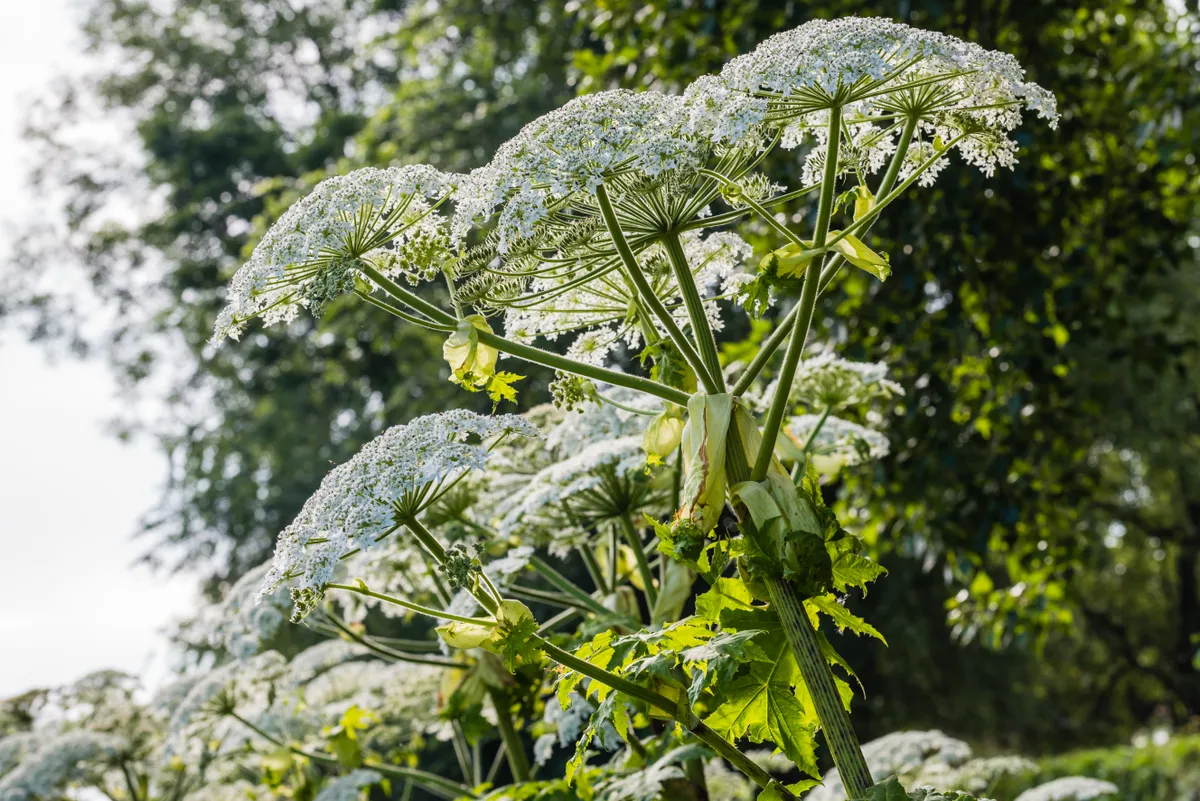Weeds are often considered a pesky nuisance, but did you know there are a few invasive species that can actually land gardeners and farmers into a spot of legal trouble?
- Britain's most poisonous berries: 9 toxic fruits to avoid
- How to identify common 'weeds'
- Why weeds are important for wildlife
James Ewens, gardening expert at Alexander Francis, rounds up his pick of the ‘criminal’ plants that could land you a hefty fine if found in your garden, or not tightly controlled.
10 dangerous weeds
Japanese knotweed

Probably the best known nuisance-plant in this list, Japanese knotweed has been seen to do so much damage that it features on house-buying surveys and can seriously impact the value of your home.
It’s one of the most invasive plants known, and while it’s not illegal to grow Japanese knotweed in your garden, it’s highly ill-advised given that it can grow through concrete and takes years to eradicate fully.
You can still be prosecuted or issued with a community protection notice if you allow it to spread to someone else’s property.
Giant hogweed

Another well-known plant, giant hogweed can often be spotted by rivers and next to motorways and has become an increasing problem in recent years. It’s often mistaken for cow parsnip, but it’s not as harmless and should be avoided at all costs.
Giant hogweed contains a chemical that, if touched, can cause third-degree burns and result in permanent scarring. If you spot any, get in touch with your local council who will arrange its safe removal. Again, while it’s not illegal to have giant hogweed growing in your garden, it’s an offence to allow or cause it to spread.
Spear thistle

Spear thistle (Cirsium vulgare) is a highly invasive and noxious weed and it’s currently illegal to grow it in your garden. Easily identifiable by its spiky leaves and purple flowers, the spear thistle can spread quickly, overpowering other species of plants, and causing harm to surrounding vegetation and crops. If it’s found in your garden it can land you a fine of up to £2,500.
Common ragwort

Common ragwort may not be illegal, but it is poisonous to most mammals and actually has its own government Code of Practice. This seeks to control the spread where there is a threat to the health and welfare of animals. You are legally required to remove ragwort if there is a risk of it poisoning horses and livestock, or spreading to fields used in food production.
- How deadly is ragwort poisonous to horses and livestock?
- Discover plants poisonous to horses: from heart issues to blindness and even death, these toxic plants can cause an array of issues for equine
Broad-leaved dock

Known to many Brits as a natural antidote to nettle stings, broad-leaved docks are listed as ‘injurious’ under the 1959 Weeds Act. So, while it’s not an offence to have broad-leaved docks growing in your garden, they’re incredibly invasive – spreading by wind, water, animals and machinery – with up to 60,000 seeds produced each year. Although they’re not poisonous, it can take decades to fully eradicate them.
Curled dock

Similar to its broad-leaved sibling, the curled dock leaf may not contain any toxins, but it’s highly invasive. It’s an incredibly flexible plant – it can take root and grow almost anywhere, is very difficult to eradicate and will outcompete most UK species.
Rhododendron ponticum

This lilac-bloomed plant – also called the common rhododendron – can be grown on your property, but great care must be taken to stop it spreading to neighbouring properties or outside your boundaries. Over the past few years, this plant has caused huge problems for native UK species, encroaching and ‘choking’ them out of where they would usually grow. The government has been under increasing pressure to take action against this invasive plant.
Himalayan balsam

Himalayan balsam is often compared to Japanese knotweed due to its highly invasive and spreading nature. While it’s not illegal to grow it in your garden, it’s almost impossible to stop it from spreading – which is an offence – given that it can be easily transferred by the wind, water and animals.
New Zealand pigmyweed

Water-based New Zealand pigmyweed was first sold in the UK as an ornamental plant for domestic ponds. However, it was subsequently banned after causing damage to rivers and lakes. As this plant grows, it knots together to form a dense mat, spreading quickly across the ground and depleting nearby plants of oxygen. Once it takes hold in the ground and starts to spread, it can be incredibly difficult to eradicate completely.
Three-cornered garlic

Finally, we have three-cornered garlic. As with a few of the plants on this list, it’s not prohibited to grow it in your own garden, but it’s illegal to allow it to spread further afield.
Easily identifiable by its white pendulous flowers, the large seeds it produces attract ants, which then spread it elsewhere, allowing it to take root on roadsides, verges, fields, woodlands and waste ground. So, while you can be extra careful, with no intention of allowing it to spread, you may have little say in the matter!